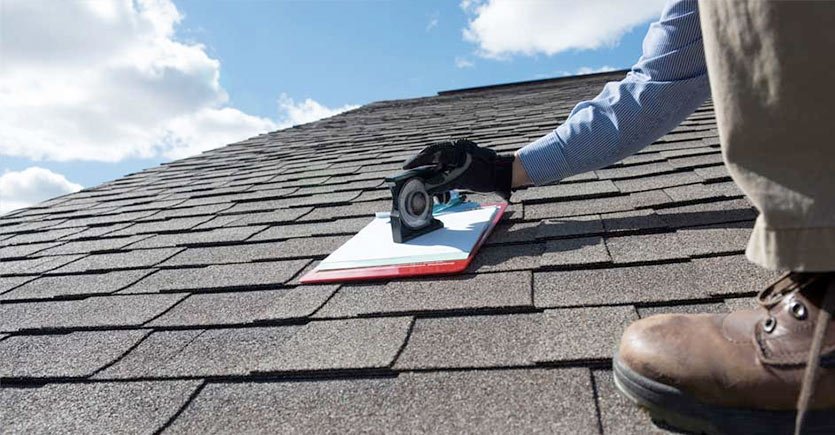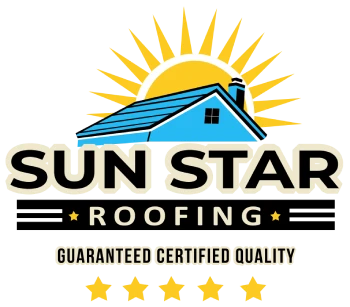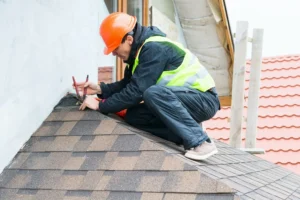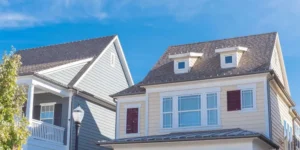Whole-house efficiency: Energy upgrades beyond just your roof for a truly comfortable and energy-saving Houston home.
The Houston Home Energy Efficiency Challenge
Let’s face it, owning a home in Houston comes with its own set of unique challenges, and near the top of that list is managing energy costs. Our long, hot summers and surprisingly humid shoulder seasons mean our air conditioners are often running overtime, working hard to keep our homes comfortable. While many homeowners focus on cranking up the AC or upgrading their cooling systems, true energy efficiency goes far beyond just the thermostat. It’s about creating a holistic system throughout your entire home, where every component works together to minimize energy waste and maximize comfort. And believe it or not, your roof plays a surprisingly significant role in this whole-house equation. This guide will take you beyond just roofing and explore a comprehensive approach to home energy efficiency upgrades in Houston, showing you how your roof is a crucial piece of the puzzle, but just one part of a larger, more effective strategy for saving money and creating a truly energy-smart home.
The Impact of Houston’s Climate on Energy Consumption
Houston’s climate is characterized by long, hot, and humid summers, with average temperatures soaring well into the 90s for months on end. This intense heat and humidity place a tremendous strain on our homes, leading to:
- High Cooling Demands: Air conditioning becomes essential for comfortable living, driving up energy consumption and costs.
- Heat Gain Through the Roof: The roof, directly exposed to the Texas sun, absorbs significant heat, transferring it into the attic and living spaces.
- Increased Humidity Levels: Humidity exacerbates the feeling of heat and makes air conditioning work even harder to maintain comfort.
- Year-Round Energy Concerns: While summers are the peak, Houston’s milder winters can still have periods of heating needs, making year-round energy efficiency important.
Addressing these climate-specific challenges requires a comprehensive approach to home energy efficiency, starting with understanding how your roof interacts with the rest of your home’s systems.
Why Complete Home Energy Efficiency Matters: Beyond Piecemeal Upgrades
While upgrading individual components like your AC system or windows can offer some energy savings, a truly effective approach to home energy efficiency is holistic. Why is a complete, whole-house approach so important?
- Synergistic Effects: Energy efficiency upgrades work best when combined. For example, a new energy-efficient roof will be even more effective when paired with improved attic insulation and sealed air leaks. The sum is greater than the parts.
- Addressing Root Causes: A piecemeal approach might only treat symptoms. A whole-house energy audit helps identify the root causes of energy waste, allowing you to address the most impactful areas first.
- Optimized System Performance: Upgrading individual components without considering the whole system can lead to inefficiencies. For example, a new AC in a poorly insulated home will still work harder and consume more energy than necessary.
- Maximized Savings and Comfort: A comprehensive approach yields the greatest overall energy savings, the most significant reduction in energy bills, and the most noticeable improvements in home comfort throughout the year.
- Increased Home Value: Whole-house energy efficiency upgrades are more attractive to homebuyers and can significantly boost your home’s market value compared to isolated upgrades.
Thinking beyond just one area, like roofing, and embracing a complete home energy efficiency strategy is the key to unlocking maximum savings, comfort, and long-term value for your Houston home.
Your Roof: The First Line of Defense Against Houston Heat
In Houston’s climate, your roof truly is the first line of defense against the elements, and its impact on your home’s energy efficiency cannot be overstated. It’s the largest surface area directly exposed to the sun, and therefore, a major source of heat gain in the summer.
How Your Roof Impacts Home Energy Efficiency: Heat Gain and Transfer
Understanding how your roof interacts with heat is crucial to appreciating its role in energy efficiency:
- Solar Heat Absorption: Traditional roofing materials, especially dark-colored ones, absorb a significant amount of solar radiation as heat. This absorbed heat raises the roof surface temperature dramatically.
- Heat Transfer to the Attic: The heat absorbed by the roof radiates downwards into the attic space, making the attic incredibly hot, often exceeding outdoor temperatures by a significant margin.
- Heat Conduction into Living Spaces: The superheated attic then transfers heat downwards into the living spaces below, through the ceiling and insulation (if inadequate). This forces your AC system to work harder to counteract this heat gain.
- Radiant Heat: Even with insulation, radiant heat from a hot roof can penetrate into living spaces, impacting comfort and increasing cooling loads.
- Impact on HVAC Ductwork: If your HVAC ductwork runs through the attic (common in many Houston homes), hot attic temperatures reduce the efficiency of your cooling system as it has to cool down already heated air traveling through the ducts.
An energy-efficient roof is designed to minimize these heat transfer processes, acting as a barrier against solar heat gain and reducing the burden on your cooling system.
Energy Efficient Roofing Options Revisited: A Quick Look
Energy-efficient roofing materials are specifically engineered to combat heat gain. As we’ve explored in more detail elsewhere (like in this helpful guide: Sun Star Roofing’s energy-efficient roofing options in Houston), these materials work by:
- Reflecting Solar Radiation: Materials like reflective shingles, metal roofing, and cool tiles have high solar reflectance, bouncing a significant portion of sunlight back into the atmosphere.
- Emitting Thermal Radiation: Energy-efficient materials also have high thermal emittance, readily releasing any absorbed heat, preventing it from building up in the roof and attic.
- Insulating Properties: Some options, like green roofs, offer significant insulation value, further reducing heat transfer.
While choosing an energy-efficient roof is a critical step, it’s just the beginning of a truly energy-efficient home. Let’s expand our focus beyond the roof and explore other key areas for upgrades.
Expanding Beyond the Roof: A Whole-House Approach to Energy Efficiency
To achieve optimal energy efficiency and savings in your Houston home, it’s essential to look beyond just the roof and consider a whole-house approach, addressing all the key areas where energy loss and inefficiency can occur.
Attic Insulation: The Unsung Hero of Energy Savings
Attic insulation is often the unsung hero of home energy efficiency, and in Houston’s climate, it’s absolutely critical. Proper attic insulation acts as a thermal barrier, preventing heat transfer between your attic and living spaces. Key benefits of upgrading attic insulation include:
- Reduced Heat Gain in Summer: Thick insulation minimizes heat radiating from the hot attic into your living areas, keeping your home cooler and reducing AC load.
- Reduced Heat Loss in Winter: Insulation also works in reverse, preventing heat from escaping your home during milder Houston winters, reducing heating needs.
- Improved HVAC Efficiency: With less heat transfer, your HVAC system operates more efficiently, consuming less energy to maintain desired temperatures.
- Increased Comfort: Proper insulation contributes to more consistent and comfortable temperatures throughout your home, eliminating hot and cold spots.
- Cost-Effective Upgrade: Attic insulation is often one of the most cost-effective energy efficiency upgrades, offering a significant return on investment.
Recommended Insulation Levels for Houston: In Houston’s climate zone, the recommended attic insulation level is typically R-38 to R-60, depending on your specific location and energy efficiency goals. Consult with insulation professionals to determine the optimal R-value for your home.
Windows and Doors: Sealing the Energy Envelope
Windows and doors, while providing light and access, can also be significant sources of energy loss and heat gain if they are not energy-efficient. Upgrading windows and doors is crucial for creating a tight energy envelope for your home. Key upgrades include:
- Energy-Efficient Windows: Replace old, single-pane windows with double-pane or triple-pane windows with low-E coatings and argon or krypton gas fills. These features significantly reduce heat transfer and improve insulation.
- Window Films and Treatments: For existing windows, consider applying solar control window films to reduce solar heat gain. Use energy-efficient window treatments like insulated curtains or blinds to further minimize heat transfer.
- Energy-Efficient Doors: Replace old, drafty doors with energy-efficient doors with insulated cores and weather stripping. Consider doors with ENERGY STAR® ratings for optimal performance.
- Sealing Air Leaks Around Windows and Doors: Caulk and weatherstrip around all windows and doors to seal air leaks and prevent conditioned air from escaping and unconditioned air from entering.
ENERGY STAR® Windows and Doors: Look for windows and doors with ENERGY STAR® labels, indicating they meet specific energy efficiency criteria for your climate zone. ENERGY STAR® certified products offer verified performance and energy savings.
HVAC Systems: Efficient Heating and Cooling for Houston
Your heating, ventilation, and air conditioning (HVAC) system is a major energy consumer in your Houston home. Upgrading to an energy-efficient HVAC system and optimizing its performance can lead to substantial energy savings. Key HVAC upgrades include:
- High-Efficiency AC Units: Replace old, inefficient air conditioners with high-efficiency models with higher SEER (Seasonal Energy Efficiency Ratio) ratings. Look for ENERGY STAR® certified AC units.
- Programmable Thermostats: Install programmable or smart thermostats to automatically adjust temperatures based on your schedule and occupancy, reducing energy waste when you are away or asleep.
- Duct Sealing and Insulation: Have your HVAC ductwork professionally inspected and sealed to eliminate air leaks, which can significantly reduce system efficiency. Insulate ducts, especially those in unconditioned spaces like the attic.
- Regular HVAC Maintenance: Schedule regular maintenance for your HVAC system, including filter changes, coil cleaning, and system tune-ups, to ensure optimal performance and efficiency.
- Consider a Heat Pump: In Houston’s climate, heat pumps can be a very energy-efficient option for both heating and cooling, offering year-round comfort with reduced energy consumption compared to separate furnace and AC systems.
SEER Ratings and ENERGY STAR®: Pay attention to SEER ratings when choosing AC units – higher SEER ratings indicate greater energy efficiency. ENERGY STAR® certified HVAC equipment meets stringent efficiency standards and often qualifies for rebates.
Smart Thermostats and Controls: Taking Control of Your Energy Usage
Smart thermostats offer advanced features and connectivity that can help you take greater control of your home’s energy usage and optimize your HVAC system’s performance. Benefits of smart thermostats include:
- Programmable Schedules: Easily program customized temperature schedules based on your daily routines, automatically adjusting temperatures when you are away or asleep.
- Remote Access and Control: Control your thermostat from your smartphone or other devices, allowing you to adjust temperatures remotely and optimize energy use even when you are not home.
- Learning Capabilities: Some smart thermostats learn your temperature preferences and automatically adjust schedules to maximize comfort and efficiency.
- Energy Usage Monitoring: Smart thermostats provide data and reports on your energy usage, allowing you to track your savings and identify areas for further optimization.
- Zoning Systems: Consider zoning systems that allow you to control temperatures in different areas of your home independently, heating or cooling only occupied zones for greater efficiency.
Smart Home Integration: Many smart thermostats can integrate with other smart home devices and systems, creating a connected and automated energy management ecosystem in your home.

Lighting: The LED Revolution for Energy Savings
Lighting is another significant area for energy savings in your home. Switching to energy-efficient lighting, particularly LED lighting, can dramatically reduce your electricity consumption for illumination. Key lighting upgrades include:
- LED Bulbs: Replace incandescent and halogen bulbs with LED bulbs throughout your home. LEDs use up to 80% less energy and last significantly longer, offering substantial long-term savings.
- ENERGY STAR® Lighting Fixtures: Choose ENERGY STAR® certified lighting fixtures, which meet efficiency and performance standards.
- Daylight Harvesting: Maximize natural daylighting by using light-colored paint, keeping windows clean, and considering skylights or light tubes in appropriate areas.
- Lighting Controls: Install dimmer switches, occupancy sensors, and timers to further optimize lighting energy use, ensuring lights are only on when and where needed.
- Outdoor Solar Lighting: Consider solar-powered outdoor lighting for pathways, landscaping, and security, eliminating electricity use for exterior illumination.
LED Lighting Benefits: LED lighting offers not only energy savings but also improved light quality, longer lifespan, and reduced heat output compared to traditional bulbs.
Appliances: ENERGY STAR® for Efficiency and Savings
Appliances account for a significant portion of household energy consumption. When replacing appliances, always choose ENERGY STAR® certified models to minimize energy use and save money over the appliance’s lifespan. Key appliance upgrades include:
- ENERGY STAR® Refrigerators: ENERGY STAR® refrigerators use significantly less energy than standard models, especially older refrigerators.
- ENERGY STAR® Washing Machines and Dryers: ENERGY STAR® clothes washers and dryers use less water and energy, reducing both utility bills.
- ENERGY STAR® Dishwashers: ENERGY STAR® dishwashers use less water and energy compared to non-certified models.
- ENERGY STAR® Water Heaters: Upgrade to ENERGY STAR® certified water heaters, considering more efficient options like heat pump water heaters or tankless water heaters where appropriate for Houston’s climate.
- Energy-Efficient Electronics: Choose ENERGY STAR® certified televisions, computers, and other electronics to reduce standby power consumption and overall energy use.
Lifecycle Cost Savings: While ENERGY STAR® appliances may have a slightly higher upfront cost, the long-term energy savings and reduced operating expenses typically outweigh the initial price difference, resulting in lifecycle cost savings.
Water Heating: Efficient Options for Houston Homes
Water heating is another major energy consumer in homes. Upgrading to more efficient water heating systems can lead to significant energy and cost savings, especially in larger households. Efficient water heating options include:
- Heat Pump Water Heaters: Heat pump water heaters are highly energy-efficient, using electricity to move heat from one place to another rather than generating heat directly. They can be particularly effective in Houston’s climate.
- Tankless Water Heaters: Tankless water heaters, also known as on-demand water heaters, heat water only when needed, eliminating standby heat losses associated with traditional tank water heaters.
- Solar Water Heaters: Solar water heating systems utilize solar energy to preheat water, significantly reducing reliance on electricity or gas for water heating. Solar water heating is well-suited to Houston’s sunny climate.
- Water Heater Insulation: Insulate your existing water heater tank to reduce standby heat losses, even if you are not replacing the water heater itself.
- Low-Flow Fixtures: Install low-flow showerheads and faucets to reduce hot water usage without sacrificing water pressure, conserving both water and energy.
Climate Considerations: Houston’s relatively mild winters make heat pump water heaters a particularly attractive and efficient option, as they perform optimally in warmer climates.
Landscaping for Energy Efficiency: Nature’s Cooling Power
Landscaping strategically around your home can provide natural cooling and shading, further reducing energy consumption and enhancing the effectiveness of other energy efficiency upgrades. Energy-efficient landscaping strategies include:
- Shade Trees: Plant shade trees strategically on the south and west sides of your home to block direct sunlight from hitting the roof and walls during the hottest parts of the day. Deciduous trees are ideal, providing summer shade and allowing winter sun for passive heating.
- Vines and Trellises: Plant climbing vines on trellises or walls to create a living shade canopy that reduces wall temperatures and provides evaporative cooling.
- Ground Cover and Mulch: Use ground cover and mulch around your home’s foundation to reduce ground heat absorption and keep the surrounding area cooler.
- Evaporative Cooling with Water Features: Incorporate water features like fountains or ponds in your landscaping to create evaporative cooling effects that can lower ambient temperatures around your home.
- Xeriscaping and Drought-Tolerant Plants: Choose drought-tolerant and native plants that require less watering, conserving water resources and reducing landscaping maintenance needs.
Strategic Planting for Shade: Carefully consider tree placement and mature tree size to ensure optimal shading of your roof and walls without blocking desirable winter sunlight.
Calculating Your Complete Home Energy Savings: Measuring Your ROI
Quantifying the energy savings and ROI of a complete home energy efficiency upgrade requires a more comprehensive approach than just estimating roofing savings alone. Energy audits and whole-house energy modeling are valuable tools for accurate assessment.
Energy Audits: Your Roadmap to Efficiency
A professional home energy audit is the most effective way to assess your home’s current energy performance, identify areas of energy waste, and prioritize the most impactful upgrades. A comprehensive energy audit typically includes:
- Visual Inspection: A thorough inspection of your home’s insulation levels, windows, doors, HVAC system, lighting, and appliances.
- Blower Door Test: A blower door test measures air leakage in your home, identifying areas where air sealing is needed.
- Infrared Thermography: Infrared cameras can detect insulation gaps, air leaks, and thermal deficiencies in walls, ceilings, and windows.
- Energy Bill Analysis: Review of your past energy bills to analyze energy consumption patterns and identify areas for potential savings.
- Customized Recommendations: A detailed report outlining recommended energy efficiency upgrades, estimated savings for each upgrade, and prioritized action steps.
Finding a Qualified Energy Auditor: Look for certified energy auditors in Houston through organizations like RESNET (Residential Energy Services Network) or BPI (Building Performance Institute).
Estimating Savings from Multiple Upgrades: Whole-House Modeling
To accurately estimate the combined energy savings from multiple upgrades, whole-house energy modeling software is often used. These tools can simulate your home’s energy performance before and after upgrades, taking into account the interactions between different systems. Benefits of whole-house modeling include:
- Accurate Savings Projections: More precise estimates of energy savings for comprehensive upgrade packages compared to estimating individual upgrades in isolation.
- Optimized Upgrade Prioritization: Modeling can help identify the most cost-effective combination of upgrades to maximize overall savings and ROI.
- “What-If” Scenarios: Explore different upgrade scenarios and material choices to compare their potential impact on energy savings and costs.
- Incentive Program Alignment: Modeling can help ensure your upgrade package meets eligibility requirements for various incentive programs.
- Long-Term Financial Planning: Provides a clearer picture of the long-term financial benefits and payback period for your complete energy efficiency investment.
Professional Energy Modelers: Energy auditors or specialized energy efficiency consultants often provide whole-house energy modeling services as part of their offerings.
Incentives and Financing for Whole-Home Efficiency in Houston
Just as incentives are available for energy-efficient roofing, various programs and financing options can help make comprehensive home energy efficiency upgrades more affordable for Houston homeowners. Explore these resources to reduce your upfront costs and improve your ROI.
Federal, State, and Local Programs: Expanding Incentive Opportunities
Incentives for whole-house energy efficiency upgrades often go beyond just roofing and can encompass a wider range of improvements. Explore these potential incentive sources:
- Federal Tax Credits (Expanded): Federal tax credits for energy efficiency may apply to a broader range of upgrades beyond roofing, including insulation, windows, doors, HVAC, and water heaters. Consult current IRS guidelines and ENERGY STAR® for eligible upgrades.
- CenterPoint Energy Rebates (Comprehensive): CenterPoint Energy may offer rebates for various energy efficiency upgrades beyond roofing, such as insulation, HVAC tune-ups, and smart thermostats. Check their website for current program offerings.
- City of Houston and County Programs: Explore any energy efficiency or sustainability programs offered by the City of Houston or Harris County, which may provide incentives or resources for whole-house upgrades.
- State Energy Efficiency Programs (Texas): While direct state-level rebates may be limited, explore any broader state-level energy efficiency programs that might indirectly benefit comprehensive home upgrades. Resources like SECO and DSIRE can provide information.
Stacking Incentives: In some cases, you may be able to “stack” incentives from different sources (federal, local utility) for the same upgrade, further reducing your net costs.
Financing Options for Comprehensive Upgrades: Making it Affordable
Financing options can make comprehensive energy efficiency upgrades more accessible and manageable for Houston homeowners. Consider these financing avenues:
- Energy-Efficient Mortgages (EEMs): EEMs allow you to finance energy efficiency upgrades as part of your mortgage when buying a new home or refinancing an existing one.
- Home Equity Loans or Lines of Credit (HELOCs): Use home equity loans or HELOCs to finance energy efficiency upgrades, leveraging the equity in your home.
- Personal Loans: Unsecured personal loans can be used to finance energy efficiency projects, although interest rates may be higher than secured loan options.
- Utility-Sponsored Financing: Some utility companies offer on-bill financing programs for energy efficiency upgrades, allowing you to repay the loan through your monthly energy bills. Check with CenterPoint Energy for potential financing options.
- Specialized Green Loans: Explore specialized “green loans” or energy efficiency loans offered by banks or credit unions, which may have favorable terms for energy-saving home improvements.
Compare Financing Options: Carefully compare interest rates, loan terms, and fees for different financing options to choose the most cost-effective solution for your situation.
Conclusion: A Holistic Approach to Houston Home Energy Efficiency
Going beyond just roofing and embracing a complete home energy efficiency strategy is the smartest and most rewarding approach for Houston homeowners. By addressing all key areas of energy loss and inefficiency, you can unlock maximum savings, create a truly comfortable home, and contribute to a more sustainable Houston community.
Key Takeaways: Complete Home Energy Efficiency for Houston
Remember these key takeaways for achieving whole-house energy efficiency in Houston:
- Roofing is crucial, but just one part of the equation.
- Attic insulation, windows, doors, HVAC, lighting, and appliances are all vital.
- Landscaping and smart controls enhance overall efficiency.
- Energy audits provide a roadmap for prioritized upgrades.
- Whole-house modeling estimates comprehensive savings and ROI.
- Federal, local, and potentially state incentives are available.
- Financing options can make comprehensive upgrades affordable.
Take the First Step: Schedule an Energy Audit Today
Don’t settle for piecemeal upgrades and limited savings. Take the first step towards a truly energy-efficient Houston home by scheduling a professional home energy audit today. Identify your home’s specific needs, prioritize the most impactful upgrades, and start planning your comprehensive energy efficiency journey. Go beyond roofing, embrace a whole-house approach, and enjoy the long-term rewards of a more comfortable, sustainable, and energy-saving Houston home for years to come.





